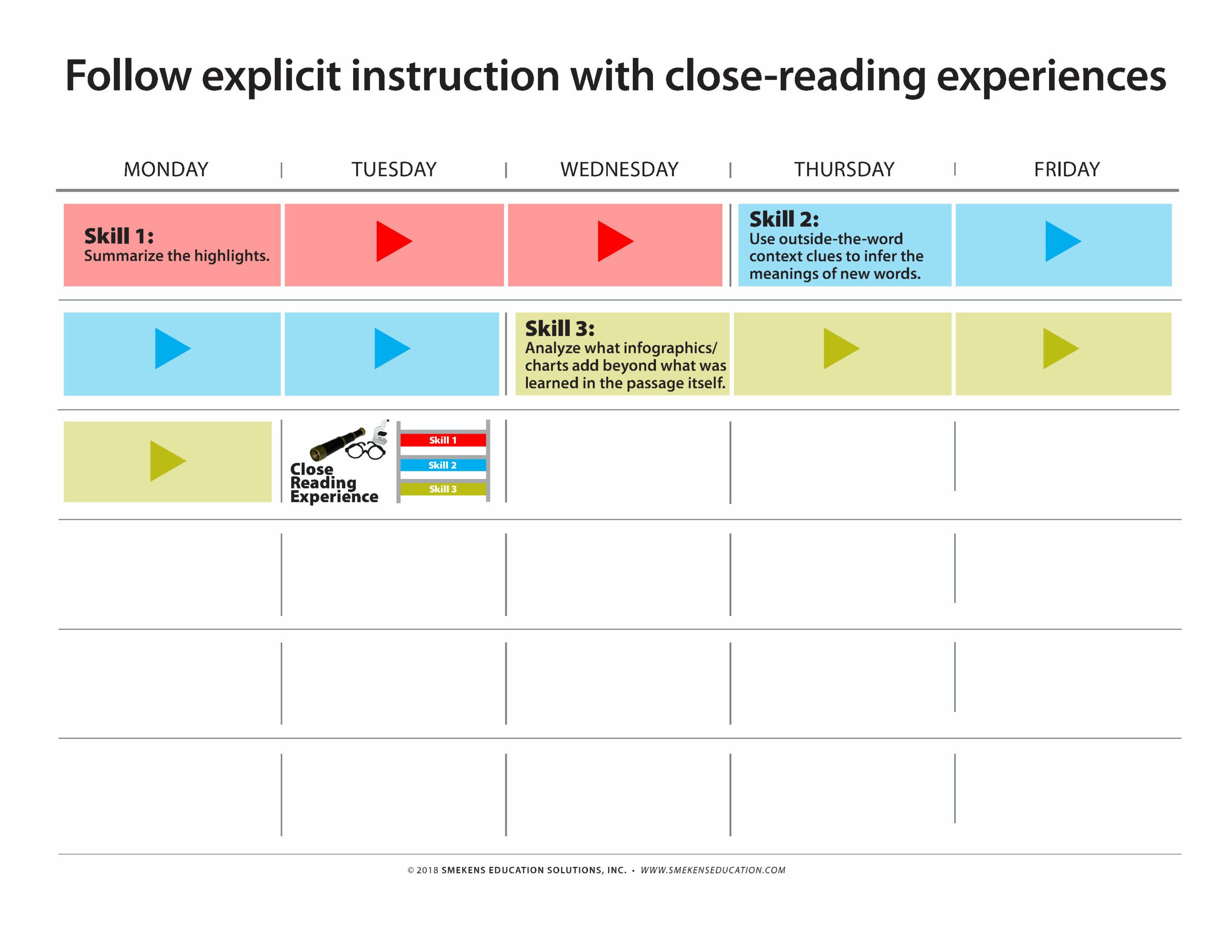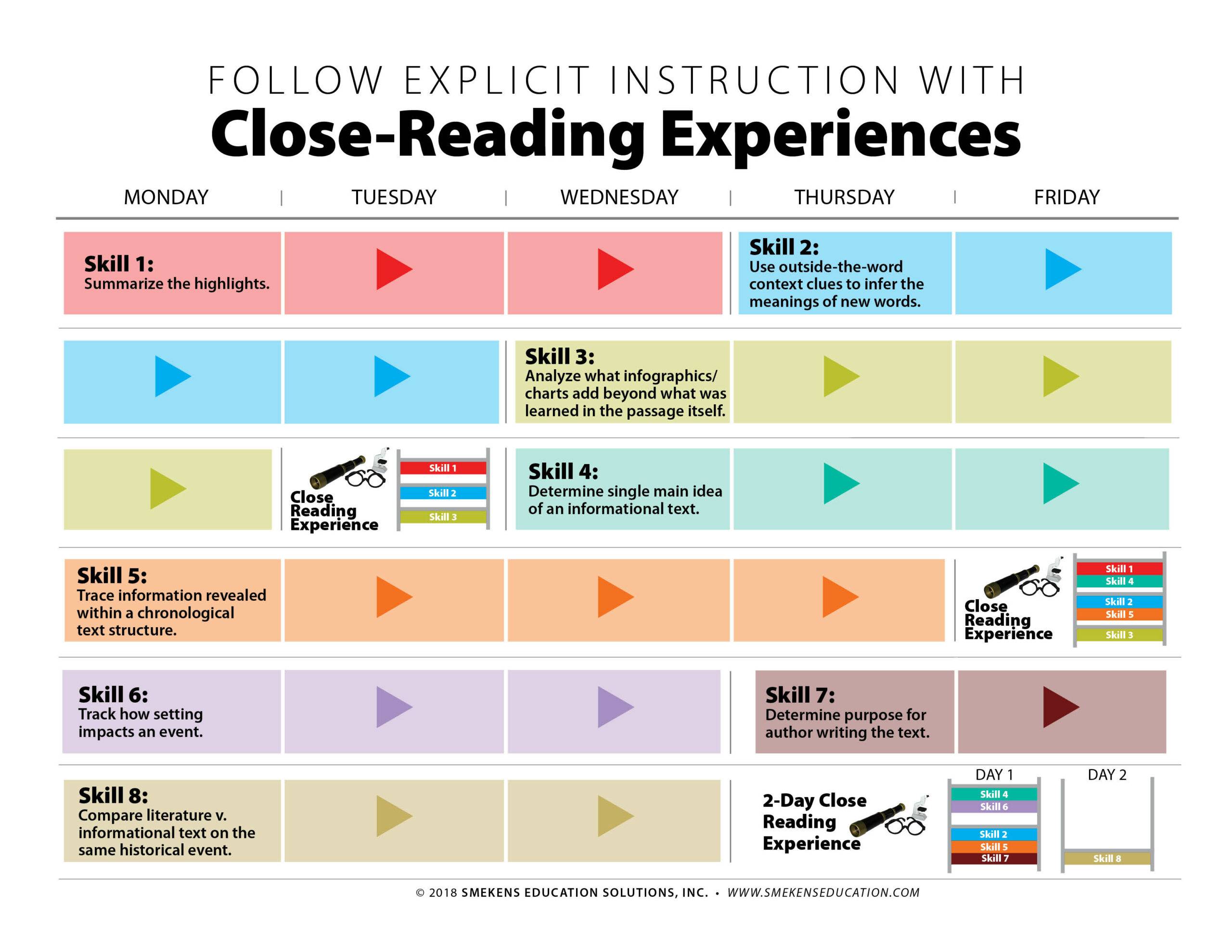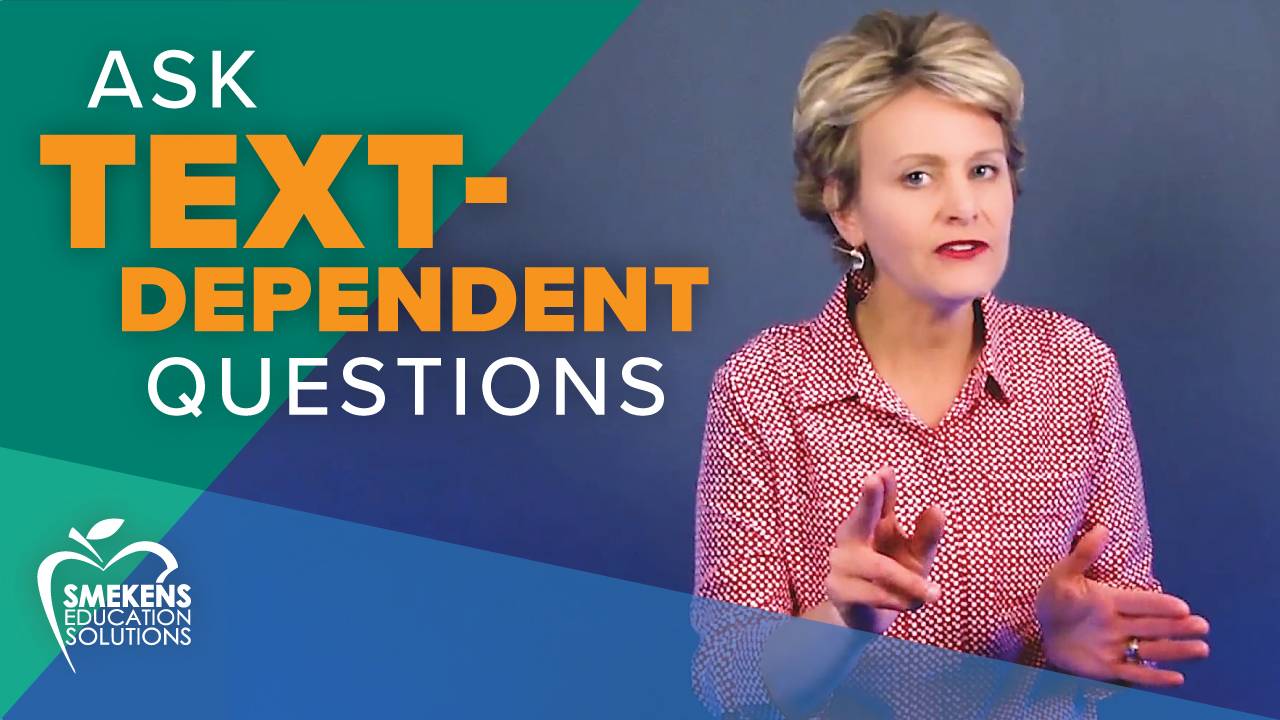Learning Center
Reading
Follow explicit instruction with close-reading experiences
november 27, 2023
After teaching multiple comprehension skills/strategies—each in explicit whole-class mini-lessons—support students as they attempt to apply all of those skills within a close-reading experience.
Close reading isn’t something you DO—it’s something you achieve. It represents a deeper level of comprehension. This is different than a typical interactive read-aloud or small-group guided reading where students read the text once and achieve a solid, overall understanding of the author’s main ideas.
Build a calendar
Imagine that your curriculum map targets the following comprehension skills to be taught via whole-class direct instruction:
- Summarize the highlights of a short text to determine the most important information.
- Utilize outside-the-word context clues to infer the meanings of unfamiliar words.
- Determine new info learned from adjacent infographics.
Although reading comprehension skills are initially taught in isolation, student success during this instructional time does not demonstrate that they have “mastered” anything. Consequently, the curriculum calendar should follow individual skill instruction with opportunities to apply them within new, cold texts. This is the notion of readers juggling multiple, different thoughts.
Each of these skills is executed in a whole-class mini-lesson series, but each is taught in isolation from other skills. The next step is for students to bring these skills together when reading a new passage.
Bring it all together
The key is to select a text that lends itself to all/most of the skills (e.g., summarize highlights, utilize context clues, analyze infographics). This will allow the teacher to assess that students not only understand the skills individually but can juggle them all within an authentic reading experience.
- They will first read this new text for gist only (e.g., practice summarizing).
- They will reread a couple of key excerpts with unfamiliar words (e.g., apply outside-the-word context clues).
- They will “read” the corresponding infographic to analyze what new information was learned and not revealed in the traditional print text.
Based on these intermittent close-reading experiences, the teacher can determine which skills students are understanding and where they need additional support.







I just received the Comprehension Skill Scaffold. Could you tell me what the L with a circle and the IT with a square mean?
Thank you!
Amanda–Great question! The abbreviations are L: Literature and IT: Informational Text.